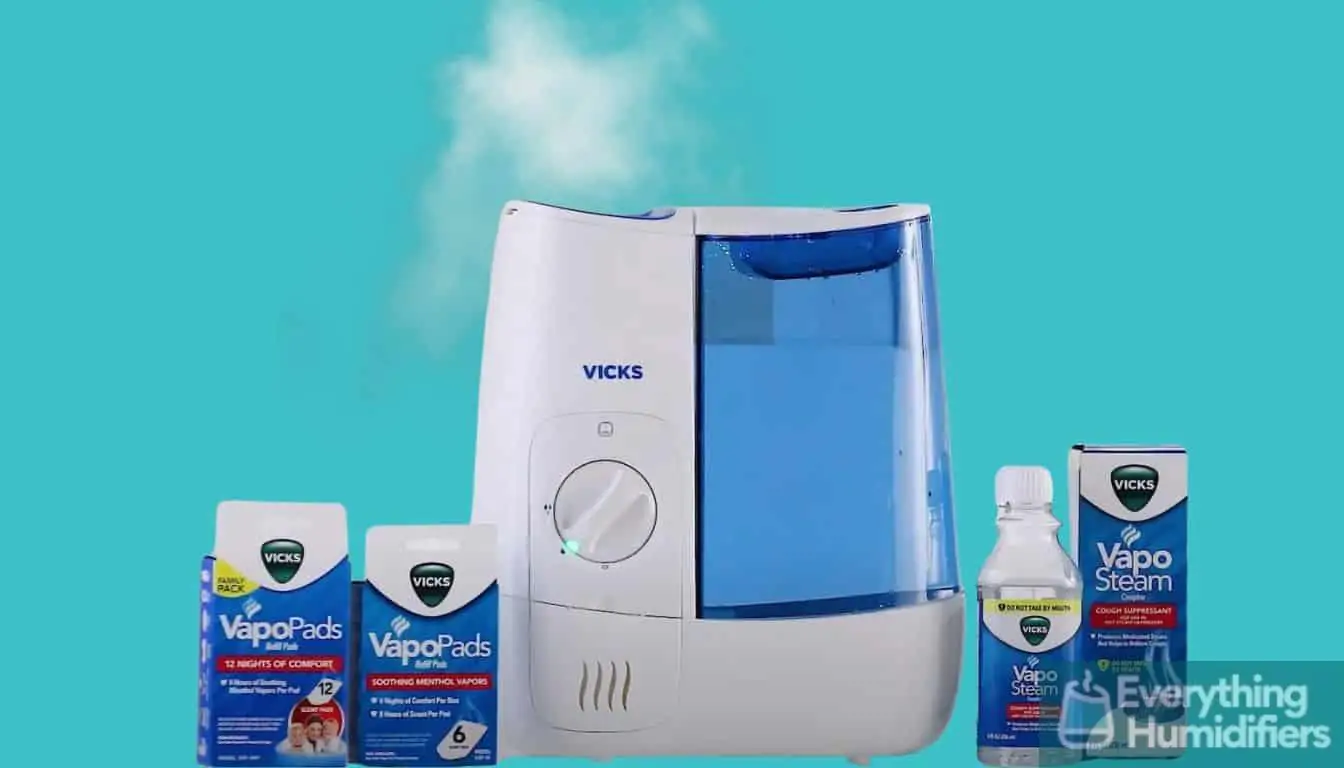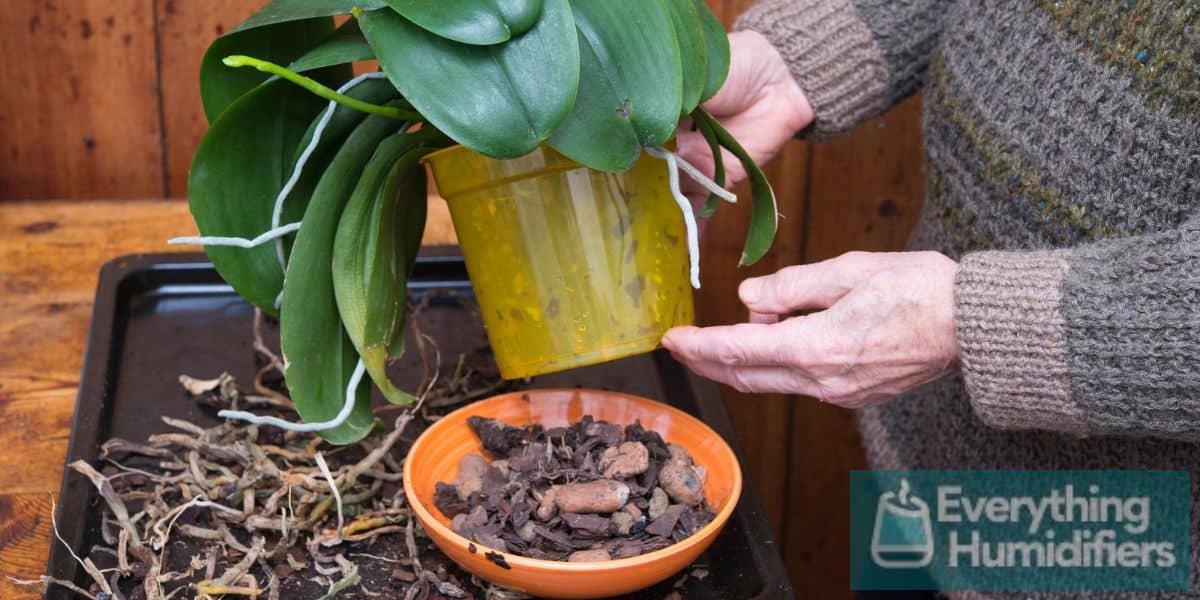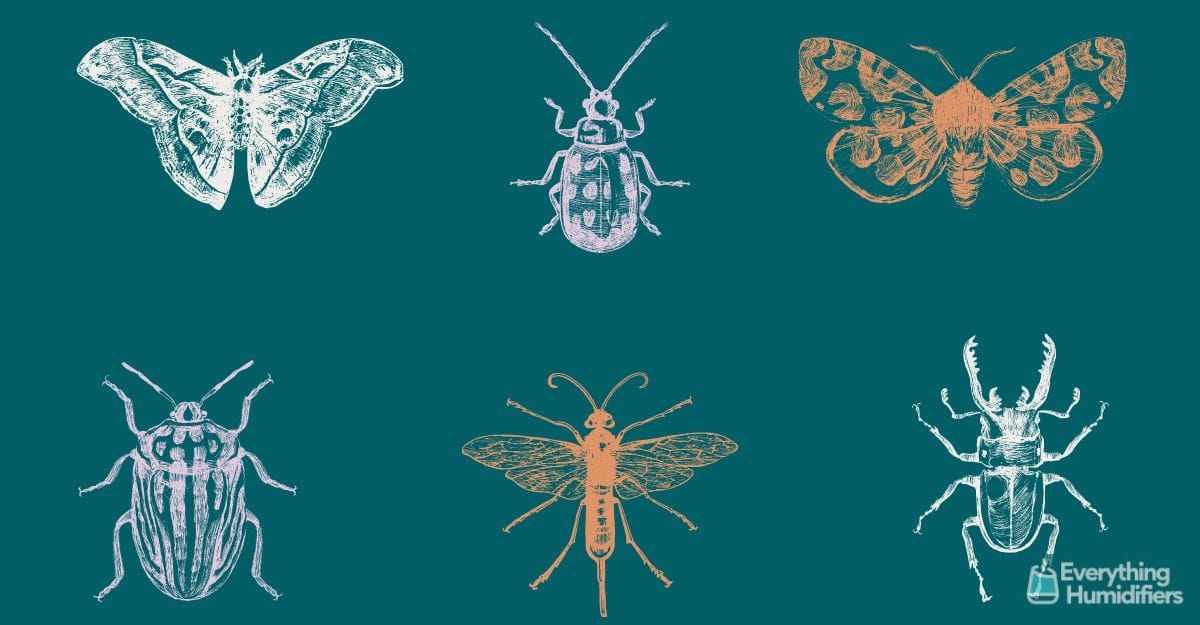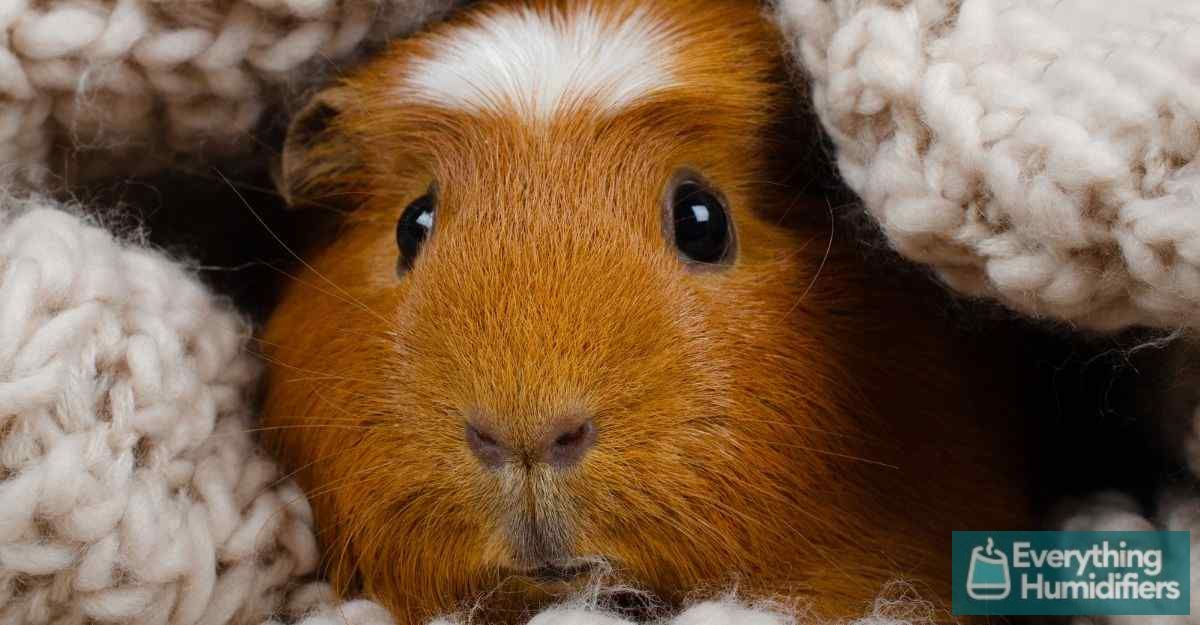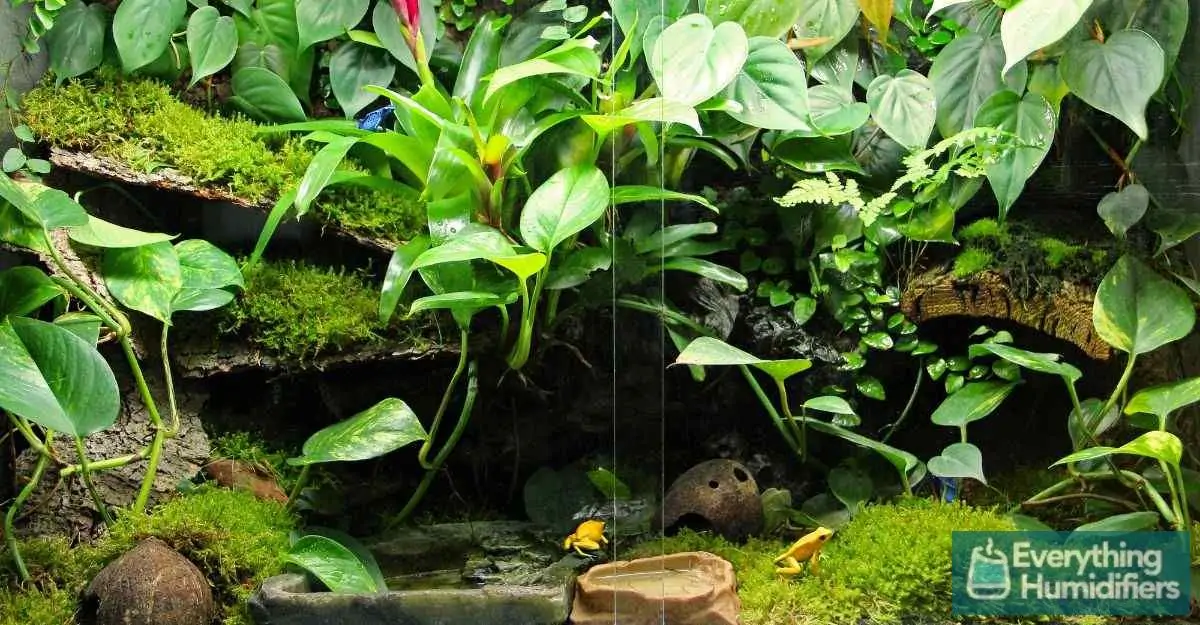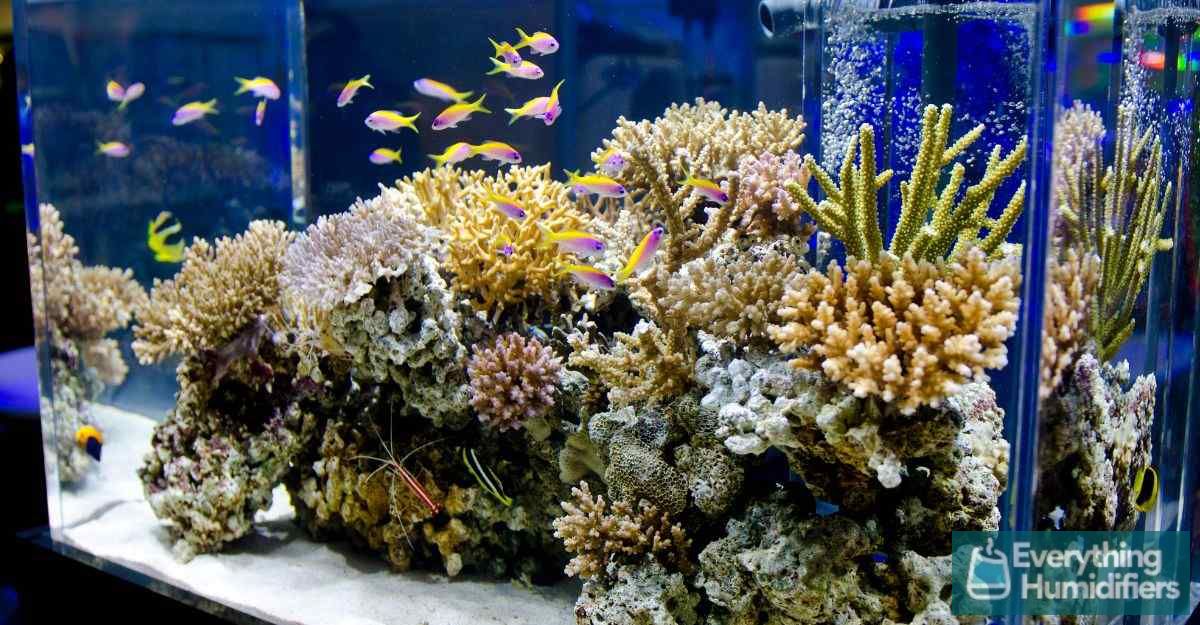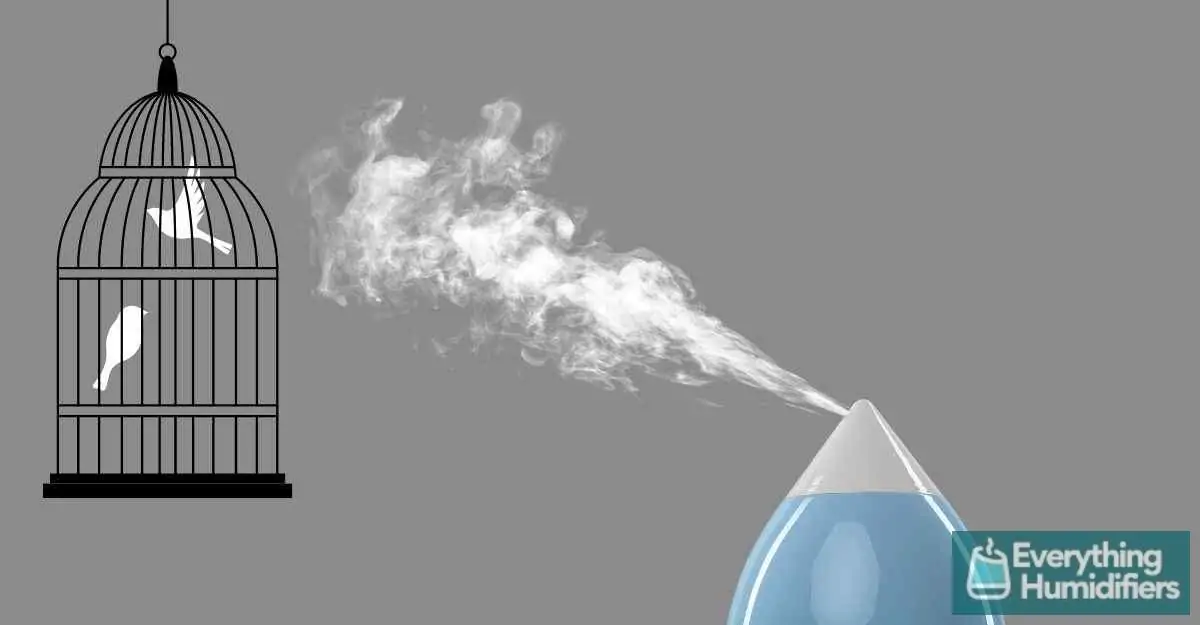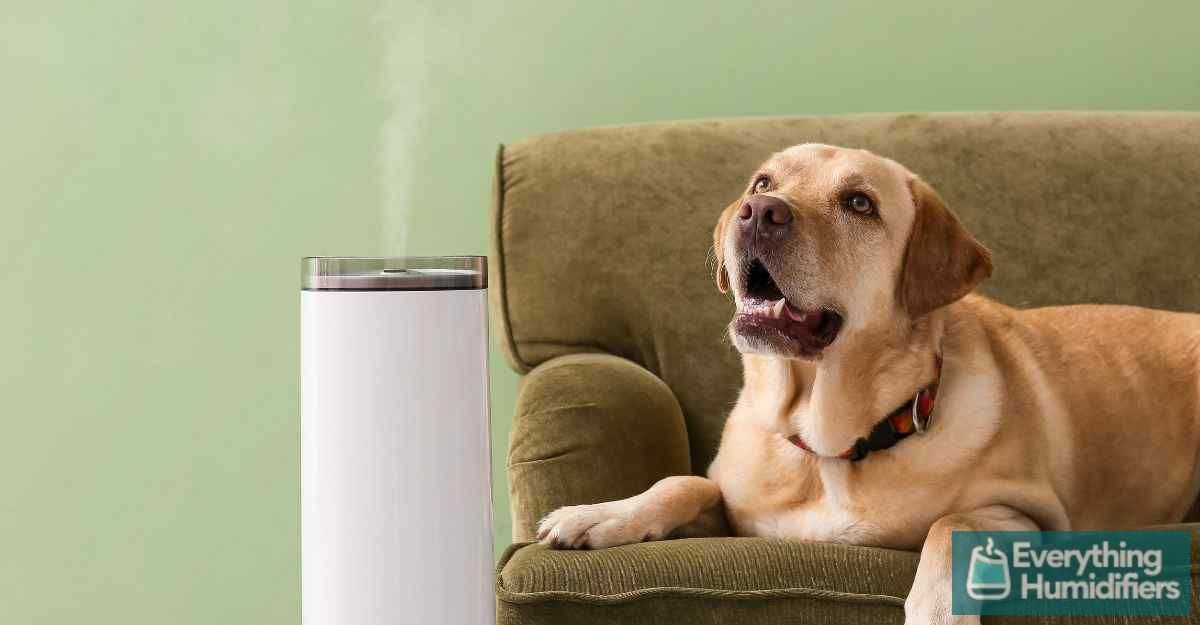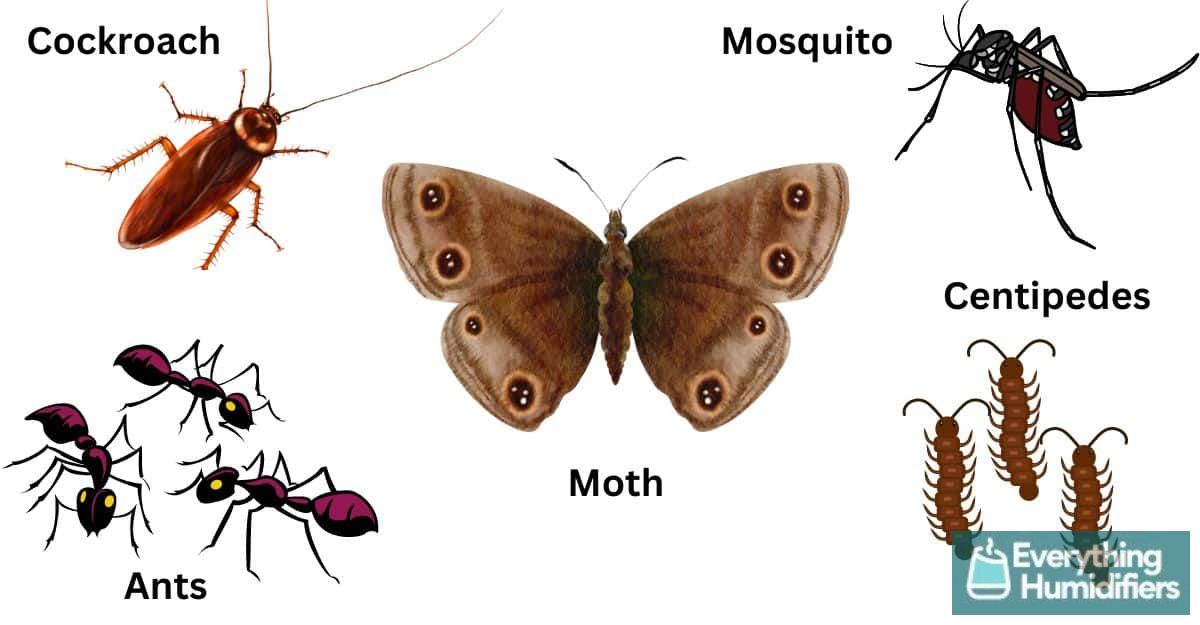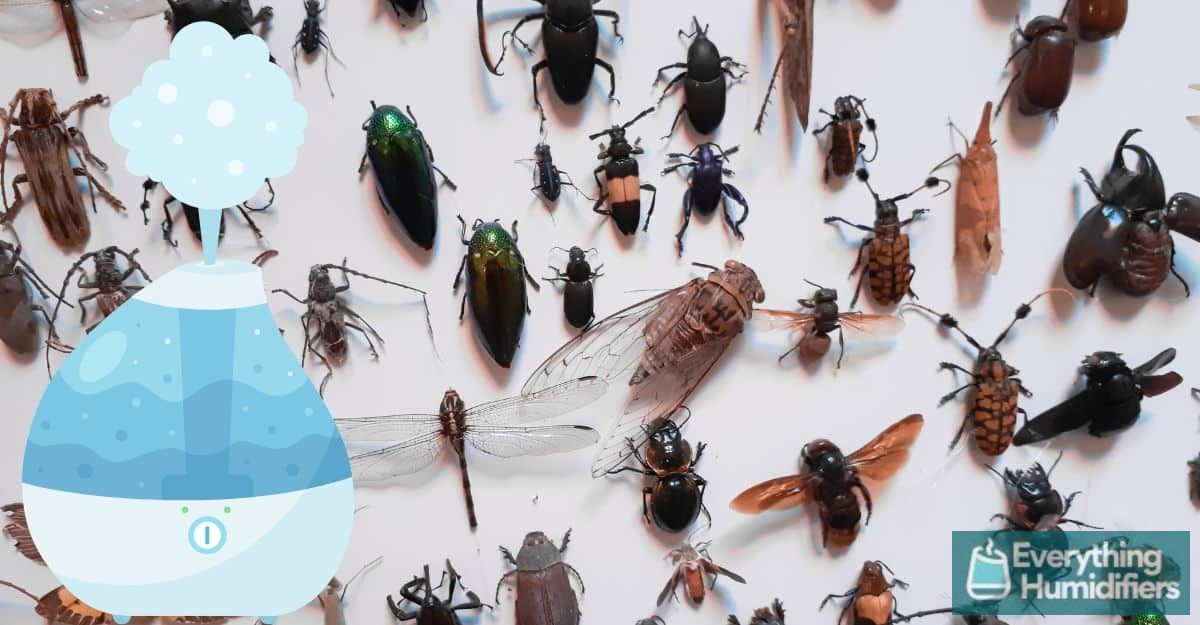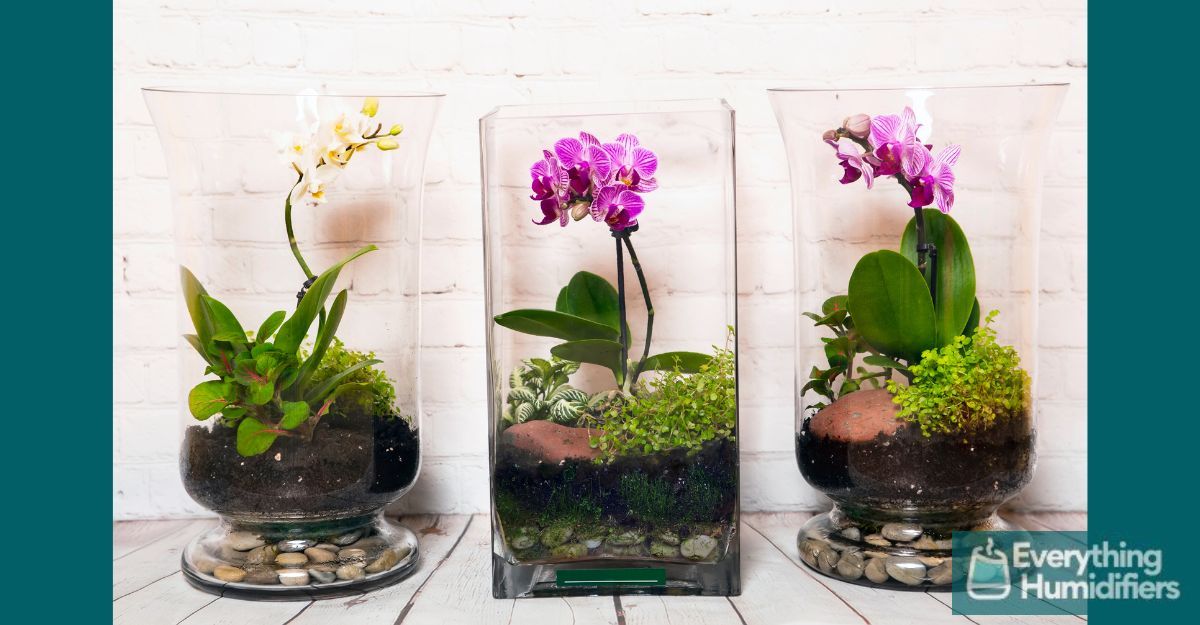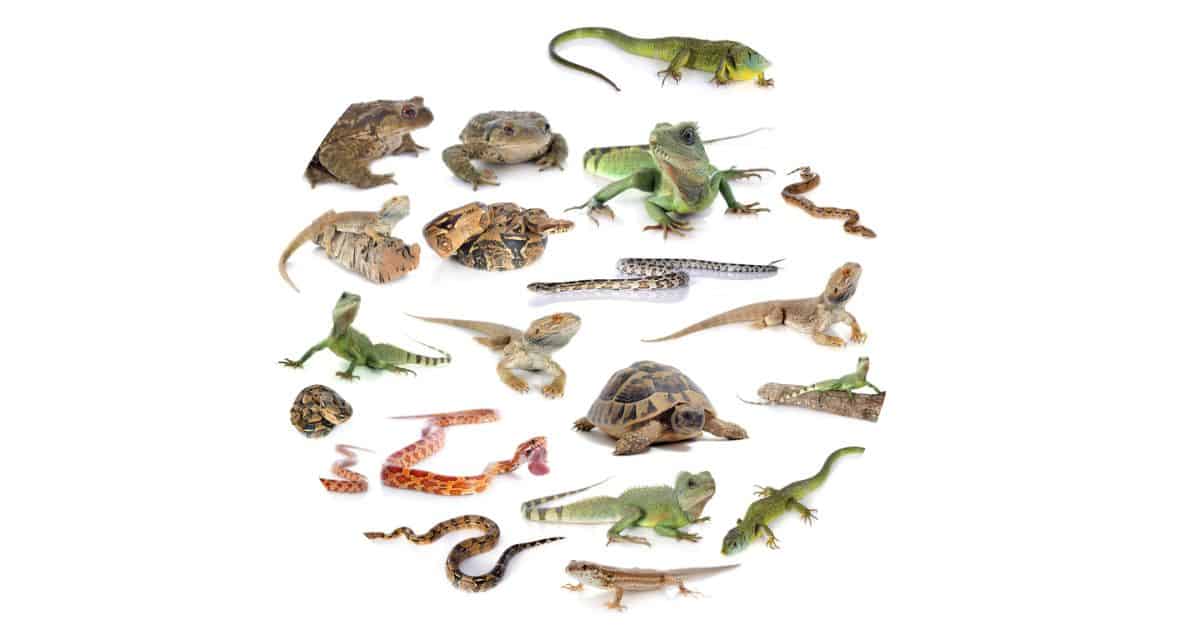Monstera has large, dark-green heart-shaped leaves with unique splits (known as fenestrations).
This fabulous plant will transform your indoor garden into a lush island getaway.
This exotic plant originates from Southern America. Their natural environment is hot and humid tropical rainforests. A humidifier for Monstera deliciosa can help to ensure that they thrive in your indoor garden.
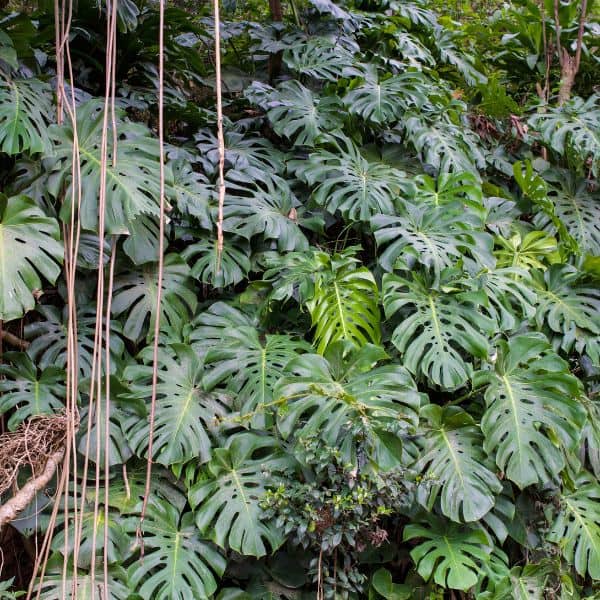
Table of Contents
Monstera and Humidity
Monstera comes from regions with high humidity, between 60% and 70%.
Generally, an average home has 40% to 60% humidity.
The ideal indoor humidity for humans is between 30 and 50%, the United States Environmental Protection Agency (EPA) recommends.
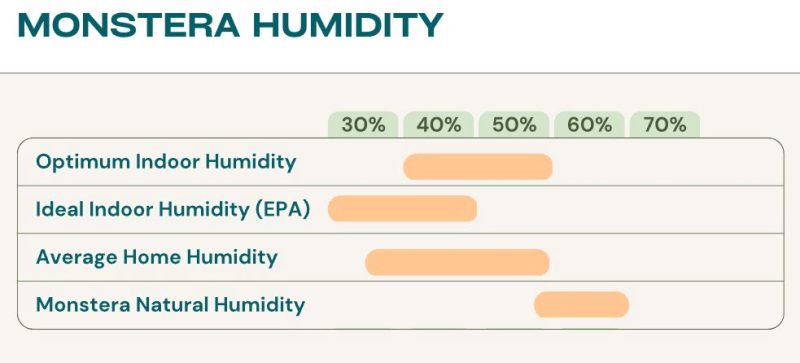
Although the humidity for humans and Monstera plants is different, we can meet in the middle about moisture. Monstera is adaptable.
Do Monsteras Like Humidity
Monsteras thrive in high-humidity environments. These tropical plants appreciate humidity levels between 60-80% to keep their large leaves healthy and prevent them from drying out.
Maintaining adequate humidity through misting or using a humidifier near the plant can promote their growth and overall well-being.
Experiment with the humidity best for you and your family, and then see how your plants react. Dry air, with a low humidity factor, will cause brown or yellow leaves that drop off.
Most people need to learn what the humidity of their home is. You can measure and track indoor moisture with a simple, inexpensive device called a hygrometer. You can buy a hygrometer online or from many hardware stores.
Consider if it is practical to have a plant that requires high humidity in your house.
A dedicated grow room, greenhouse, or conservatory could be a better option if you have several plants that need high humidity.
You don’t want to worry about the impact of higher humidity on your family or home.
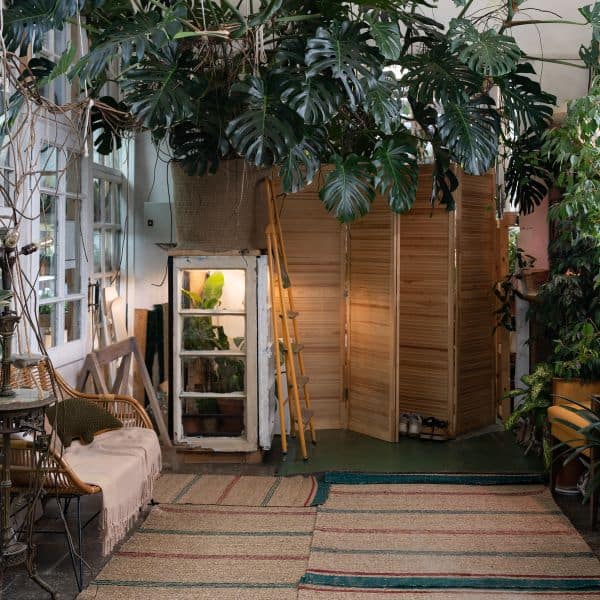
How to increase the humidity for your Monstera
Humidifier
A humidifier will increase the moisture content in the air by expelling a fine mist of cool or warm water.
Spray water on your plants
Using a spray bottle, mist around your Monstera, and try not to let too much water settle on the leaves. This task can be either cathartic or tiring, whichever way you look at it.
Rain simulation
Some people put their plants in the shower, outside in the rain, or take them out and turn the hose on several times a year to simulate the ‘rainy’ season.
Monstera is tolerant, but as with most plants, it is advisable to introduce humidity gradually to your plant care routine to find out what works best for you and your plants.
Be aware that the chances of pests, diseases, and mold increase as the humidity increases because water is sitting around and not evaporating.
A workaround is ensuring the air is moving; a fan or a natural breeze can help.
The best way to measure the increased humidity is by using your hygrometer.
We recommend recording your humidity readings before increasing humidity and monitoring throughout the seasons for the first year so you can create a schedule if you have a distinct humidity range during the year.
Live in a dry climate?
It may take several days to see the benefits of the increased humidity because the rest of your home and contents will also be using the extra water.
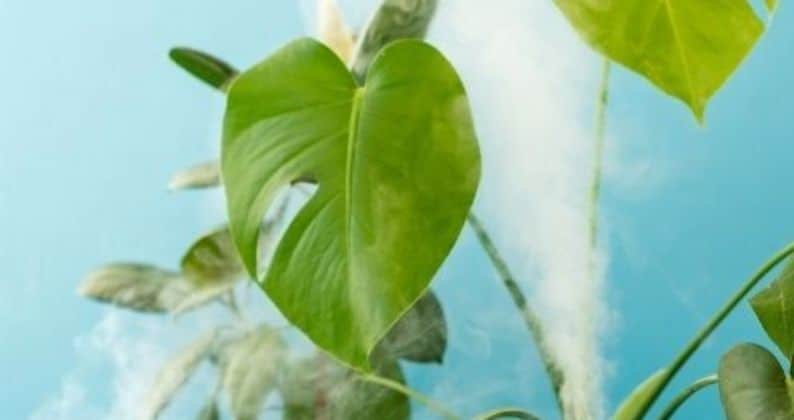
How to choose a humidifier for Monstera
When choosing a humidifier for Monstera, there are a few things to consider.
Start Small
Start small if you are a beginner and still learning how to grow exotic indoor plants.
Refrain from splashing out on a costly humidifier only to find that your passion for tropical plants fades.
Humidifiers come in all sizes and prices, and a less-expensive machine as a starter can provide all you need to get you going.
Consider first the square footage of the area that you wish to humidify and buy a humidifier that has a corresponding capacity.
Ultrasonic or Evaporative
Evaporative
The water in the humidifier tank saturates a filter. A fan draws air over the filter, picks up some water, and puts mist back into the air.
Most of the time, you will not see the mist coming from the unit, just as we cannot view the humidity in the air.
Filters help prevent unwanted minerals or microbes in the water from going into the air and being breathed in by yourself or your plants.
Depending on the quality of your water, using distilled water in your humidifier will help the life of the filter.
Ultrasonic
Water is vaporized using sound waves and sent into the air by a fan.
Typically these have a lot of vapor dispensed.
Usually, they don’t have a filter; therefore, the vapor quality will depend on the quality of the water you use to fill the tank.
If you use hard water, the minerals from the water break into a fine mist; once dried, this may form white dust on surfaces.
Using distilled water can help prevent this.
Warm or Cool Mist
Warm mist humidifiers can be dangerous to children and pets because an element heats the water.
If you are still deciding which to choose, you can buy humidifiers with both options in one unit to test them out.
Or, some people use warm mist in winter and cool in summer. If you have other plants, consider their humidity needs as well.
Water
Always use distilled or soft water that doesn’t contain too many minerals.
Ultrasonic humidifiers break up the water and minerals in the water.
White dust can settle if the water is heavy in minerals as the mist dries.
Apart from extra dusting, this is not ideal for the plant as it may compromise its growth due to the impact on its respiration and photosynthesis.
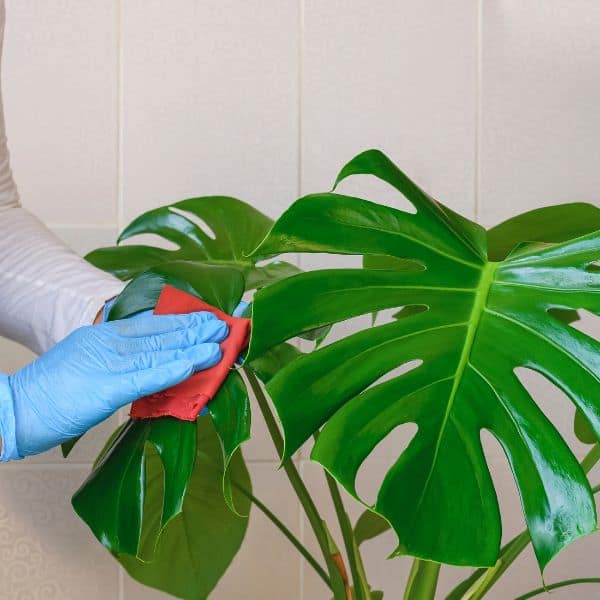
Position
Ensure that you position your humidifier so it does not blow onto the plants.
The mist that sits on the leaves too long will attract pests and disease.
Position a fan nearby. The breeze will help dry the leaves, as they would in a natural rainforest.
Safety Features
Need to run your humidifier year-round? Ensure that your model has an automatic shut-off feature. The machine will switch off when the water level is low.
When a humidifier runs all the time, there may come a day when you are too busy and forget to refill it. You do not want the device to burn out or cause damage.
Tank Capacity and Running Time
If your indoor garden humidifier needs to run for long times every day, a tank with a larger capacity will be beneficial.
Remember to consider how heavy or difficult it would be to refill it.
Smaller tanks are easier to deal with but need refilling more often.
SMART Humidity Control Feature
You want to create a humid environment, not a dripping rainforest.
Running a humidifier in an enclosed space can create damp, moist conditions that encourage bacteria, mold, and fungi to breed.
You don’t want to have to track the humidity in your indoor garden all the time.
SMART devices will check humidity and automatically turn on and off to ensure the constant level that you have chosen.
Easy to Clean
Ensure the machine is easy to take apart, clean, and put back together.
It is vital to clean your humidifier often to prevent it from dispensing unhealthy microbes into the air; you or your plants will not appreciate that.
Design and Aesthetics
After spending so much time making your indoor plants look attractive, you don’t want to install an ugly device.
Look for a humidifier with a modern design ethic that enhances your indoor garden and your décor theme. Or one that fades into the background and lets your plants be the center of attention.
Cuteness doesn’t necessarily impact performance!
Reddit has some informative posts from users about using humidifiers with Monstera.
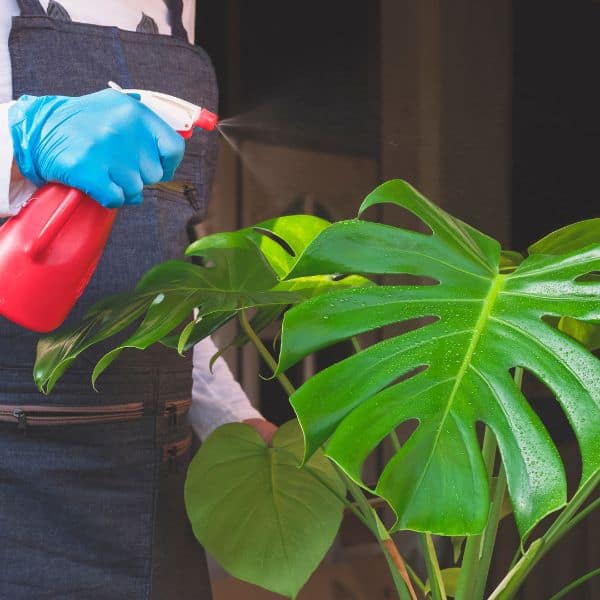
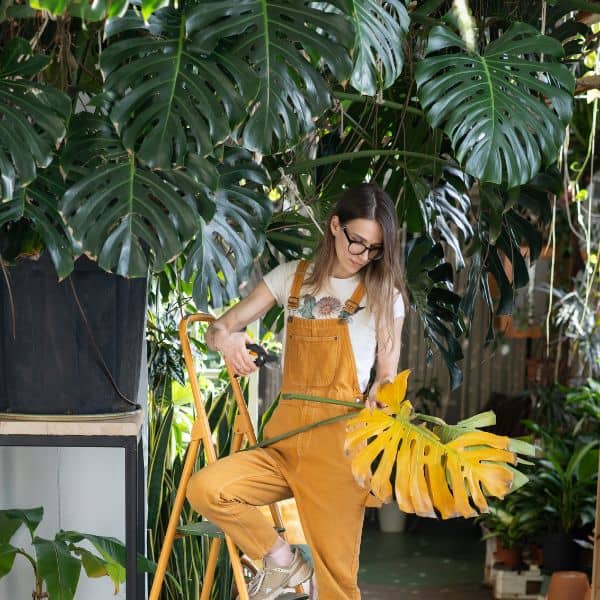
Best conditions for growing Monstera
This tropical plant is adaptable to extremes and loves high temperatures and humid conditions. They thrive in well-draining, slightly moist soil.
Watering
Water your plant often and ensure that your container has drainage holes that allow the water to run out. You don’t want the roots to remain in damp soil as they can rot, and your plant will die.
Light
About light, the University of Wisconsin-Madison/Wisconsin Horticulture advises that your Monstera plant:
- Loves indirect sunlight in summer
- Direct sun in winter and
- It may be grown under fluorescent lighting.
- They will only form leaf perforations if the light is adequate.
Temperature
Warm temperatures between 65 F (18.3 C) to 75 F (23.8 C) are preferable.
They will not grow below 50F (10 C) and don’t like frost.
We had a Monstera growing in the corner of our hallway near the front door. I remember, as a child spending time during the school holidays wiping the leaves down and seeing them shine.
That plant thrived with sea breezes and humidity around 65%. The temperature varied from 72.3°F (22.4°C) to 58.4°F (14.7°C).
AKA – Other names for Monstera deliciosa
- Hurricane plant
- Swiss cheese plant
- Ceriman
- Custard plant
- Fruit salad plant
- Indian ivy
- Mexican breadfruit
- Split-leaf philodendron
- Costela-de-adao
- Adam’s Rib
Summary
This plant thrives in hot, humid, tropical regions. Your optimum home humidity of 40% to 60% may need to be higher for Monstera to flourish.
Using a humidifier for Monstera, you can have a comfortable environment for humans and plants to flourish. You will soon have a luscious, insta-worthy indoor garden to show off to friends and family.
Once you have established this plant in your indoor dream garden, add more variety, color, and other exotic species.
For more information about humidifiers and their features, we have a comprehensive Humidifier Buyers Guide:


